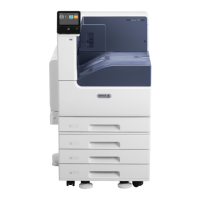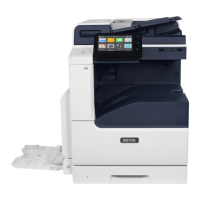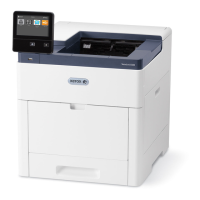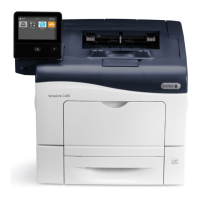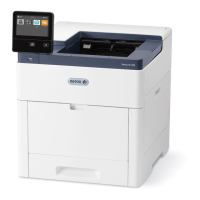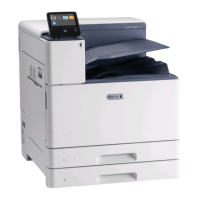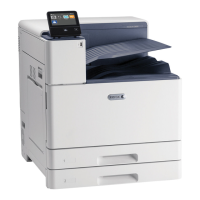D E T A I L E D S P E C I F I C A T I O N S V E R S A L I N K ® C 7 0 0 0 S E R I E S
Customer Expectation and Installation Guide 2
2 Detailed Specifications
System specifications
Print Speed and
Monthly Volume
Simplex Speed
B&W/Color ppm
Up to 35
(SFP C7000 Only)
Recommended
Average Monthly
Print Volume
1
Up to 10,000 images for SFP
Maximum
Monthly Duty
Cycle
2
What exactly is a Duty Cycle?
Duty Cycle is a print device’s rated capacity to continuously perform work under normal conditions. It is usually expressed as the sustainable volume in
letter- or A4-sized pages that can be printed per month.
Define the problem
When discussing a machine’s capabilities, there is often a misconception about its Duty Cycle. Customers tend to think in terms of duty cycle, while Xerox
thinks in terms of AMPV (Average Monthly Print Volume). Many print device vendors today do not define what these terms mean, how they are different,
and how it affects a customer.
What are considered “normal conditions”?
Because Duty Cycle is based on how the printer performs under “normal conditions,” you first must define what “normal conditions” are—and there are
many factors that affect the execution of everyday print jobs. These include everything from the robustness of the machine and the types of applications
being run to the physical environment in which the customer is printing.
In addition, any true measure of what constitutes “normal” must account for those occasions when a job is running at less than maximum speed. And as we
all know, there are other times that for any number of reasons, a job isn’t running and the machine sits idle. It’s a natural part of the printing business. So to
calculate Duty Cycle, Xerox took into account these “normal conditions”, as well as the anticipated shift usage per week, to consider all factors that a
machine and its operators may encounter when running print jobs.
What is the difference between AMPV and duty cycle?
Duty Cycle takes into account the actual capabilities of a machine with varying circumstances, while Average Monthly Print Volume (AMPV) is the volume
an average customer is expected to produce on a machine in a month. AMPV reflects a range of an entire machine population’s monthly usage, while Duty
Cycle displays the potential to grow while still utilizing the machine. This is important to keep in mind because although a customer’s typical print volume
may fall into the AMPV range, the company may grow beyond the usual volume and printing capability of the machine. This is why when making a buying
decision,
a customer should look at their AMPV and the company’s potential
to grow.
Ethernet 10/100/1000 Base-T, High-speed USB 3.0, Wi-Fi 802.11n/g/b/a and Wi-Fi Direct with optional Wi-Fi Kit (concurrent wired and wireless connections
supported), NFC Tap-to-Pair
1
The Average Monthly Print Volume is the expected regular monthly throughput.
2
The Monthly Duty Cycle is the maximum volume capacity expected in any one month. This volume us supported under standard vendor supplied service for any
single month but is not expected to be sustained on a regular basis. Customers should consider higher volume machines or multiple machines is average monthly
volume approaches the maximum duty cycle on a continual basis.
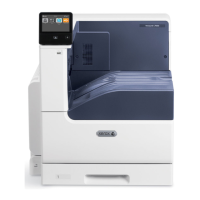
